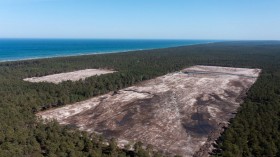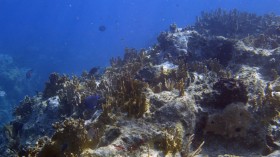New research suggests a record of ancient climate change is embedded in magnesium deposits present in ancient plankton shells. With further research, scientists may be able to use these ancient plankton shells to establish climate variability in Earth's far distant past, as well as provide new methods of measuring ocean acidification and salinity in past oceans.
The research, published in the journal Earth and Planetary Science Letters, reveals new insights on the state of the climate hundreds of millions of years ago.
Growth bands in ancient plankton shells, when examined beneath an X-ray microscope, show how shell chemistry records the sea temperature. As microbial plankton grow in ocean waters, their shells, which are made of calcite, trap trace chemical impurities.
Scientists have notices that plankton growing in warmer waters have a greater number of impurities. When plankton die, they fall to the floor of the ocean, where they are entombed in mud, thus preserving their shells as they were at the time of death.
By getting an up close look at the unearthed plankton shells with an electron microscope, researchers from University of Cambridge were able to measure trace signatures of magnesium in the shells.
The magnesium is preserved in the plankton shells like growth rings of a tree, except the shells form rings on a daily basis, rather than once a year. Scientists are able to date the age of the plankton by assessing the magnesium rings.
"These growth bands in plankton show the day by day variations in magnesium in the shell at a 30 nanometer length scale. For slow-growing plankton it opens the way to seeing seasonal variations in ocean temperatures or plankton growth in samples dating back tens to hundreds of millions of years," said Simon Redfern, one of the experimenters on the project.
"Our X-ray data show that the trace magnesium sits inside the crystalline mineral structure of the plankton shell. That's important because it validates previous assumptions about using magnesium contents as a measure of past ocean temperature."
Redfern and his team's measurements reveal the chemical environment of the trace elements in the plankton shell, showing that the magnesium sits in calcite crystal rather than in microbial membranes in their impurities in the shell.
"This helps explain why temperature affects the chemistry of plankton shells -- warmer waters favor increased magnesium in calcite," the researchers wrote.
Currently, the research team is assessing how plankton shells grow and whey they change at all in the ocean floor sediments.
© 2024 NatureWorldNews.com All rights reserved. Do not reproduce without permission.





